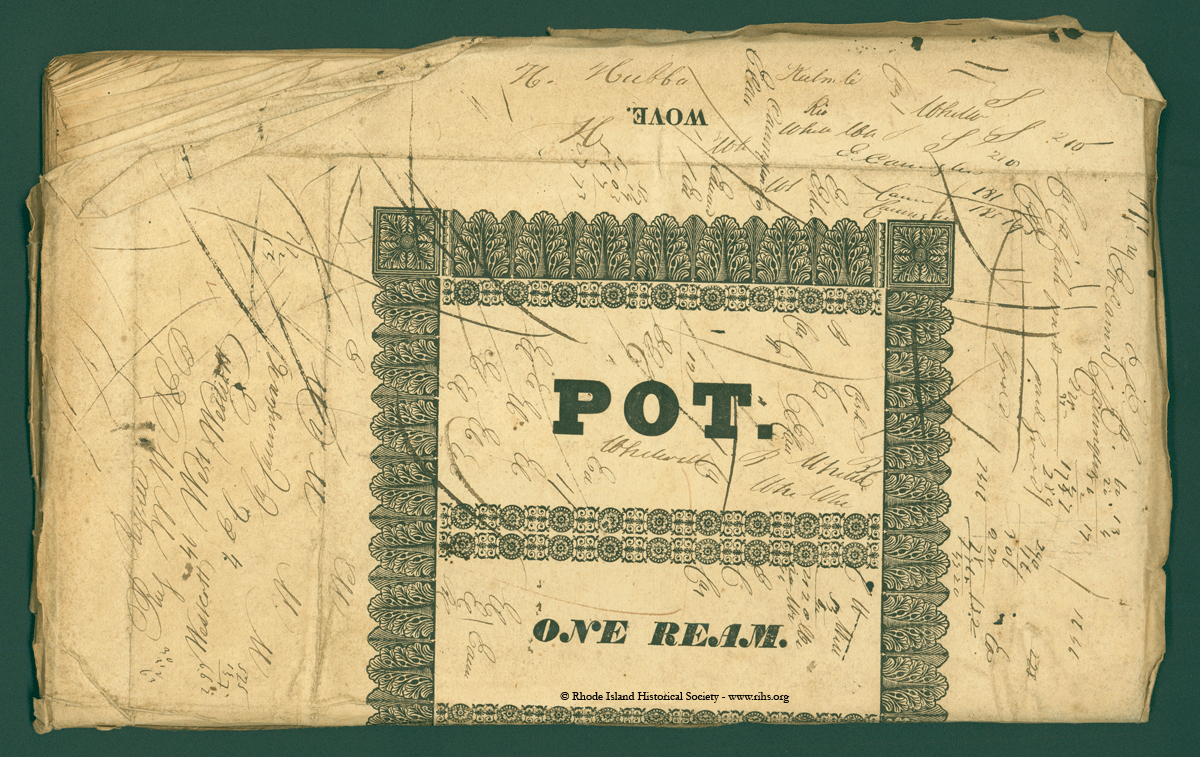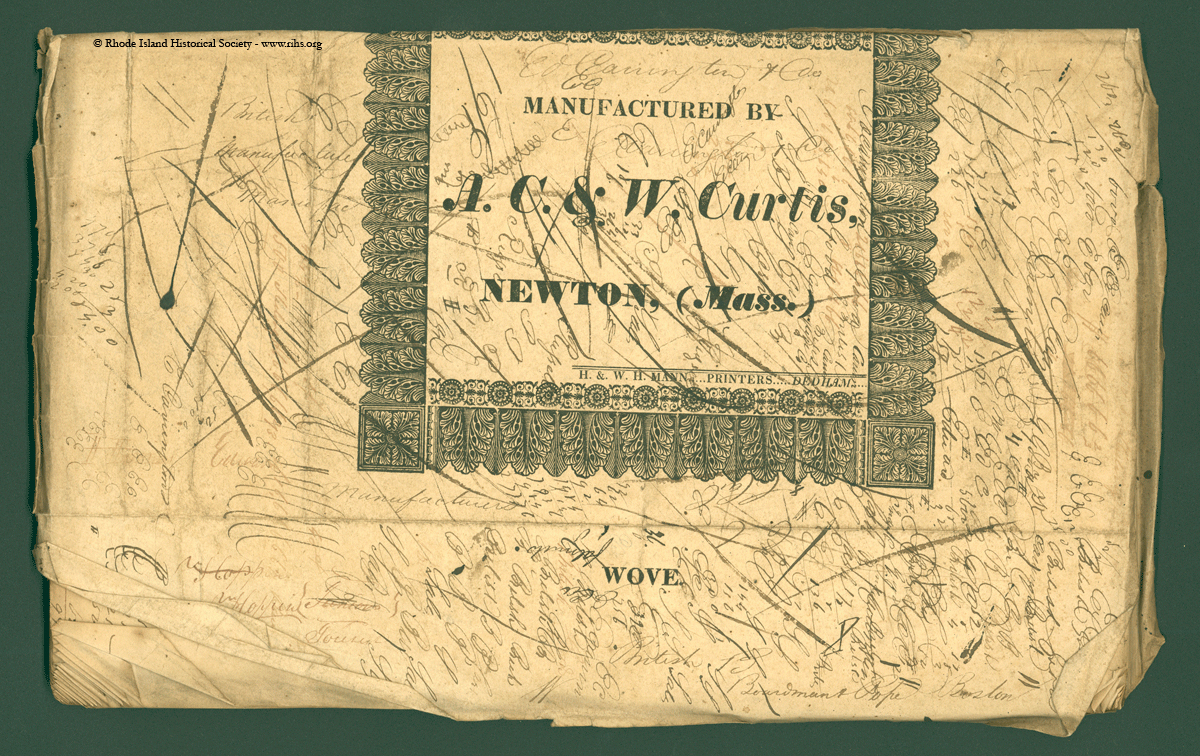Primary source institutions like libraries, museums, and historical societies are often filled with repurposed objects, items originally intended to fulfill one task that prove perfect for something else entirely: an almanac used as a diary, a ledger book used as a canvas for a Native American artist’s depiction of a battle scene and any number of cases in which the best tool for the job was whatever happened to be at hand. It’s a recycling impulse that’s particularly resonant in times of economic difficulty.
Pictured here are the front and back of a blotter from the papers of Edward Carrington* (more about what a blotter is in a moment), and it offers a perfect example of just this type of practical recycling.
Front:
Back:

Paper purchased in the nineteenth century (as today) was sold in reams, and ream wrappers were to a ream of paper as dust jackets are to a book: They protected the paper itself and also offered some advertising for the papermaker.** This wrapper indicates the papermaker—A. C. & W. Curtis of Newton, Massachusetts***—, the fact that the paper is wove paper rather than laid paper, and the paper’s size, in this case pot (named for the watermark image of a pot commonly used on paper of this size).
Anyone not familiar with nineteenth-century accounting and record-keeping practices might still be wondering what a blotter actually is. Physically it was a blank book composed (in this case and others from among the dozens in the Carrington Collection) of 96 pages (made from 24 full sheets of paper). The blotter operated as a kind of working book in which various transactions might be noted during the day before eventually being stored in a more permanent form, such as a ledger.
Here’s a more contemporary explanation of blotters, or “day-books” from Salder’s Business Book-keeping & Practice (1897):
As the images of the Carrington blotter above indicate, even the wrapper was used for pen trials, quick sums, and even some stray doodling. Waste not, want not.
(For more information about ream wrappers, see the entry in the Encyclopedia of Ephemera.)
*MSS 333, sg1, ser2, subser7, box 5, folder 3
** The American Antiquarian Society has an extensive collection of ream wrappers.
*** According to Lyman Horace Weeks (A History of Paper-Manufacturing in the United States, 1690 – 1916, New York, 1916. Pages 197-8) Simon Elliott and Solomon Curtis opened the earliest paper mills in the Newton area. Allen C. and William Curtis took over the Curtis and Elliot mills in 1834. According to this account of an 1837 exhibition, they were the first New England papermakers to produce paper colored in the vat. A claim worth further investigation.


One thought on “Reduce, Reuse, Recycle”